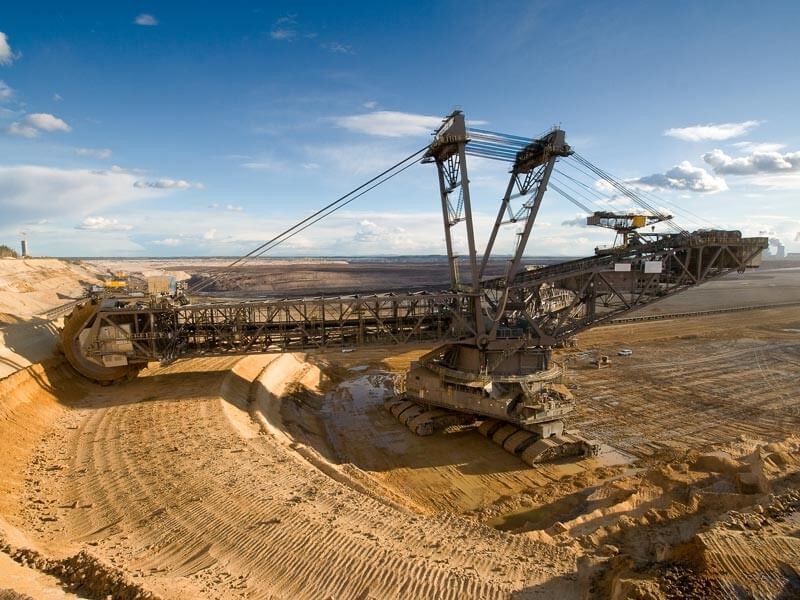
Bucket wheel excavator
The bucket wheel excavator (BWE) is a colossal piece of mining equipment designed for continuous surface mining operations, particularly in open-pit mines. With its distinctive appearance characterized by a massive rotating wheel fitted with numerous digging buckets, the BWE stands as one of the largest and most efficient earthmoving machines in the world.
At the core of a bucket wheel excavator is its wheel, which can reach diameters of up to 80 meters (260 feet) or more. This wheel is mounted on a boom structure, which allows it to rotate horizontally and move vertically to adjust the digging depth. Each bucket attached to the wheel is capable of scooping up vast quantities of overburden or ore with each rotation, significantly increasing productivity compared to conventional excavators.
The operation of a bucket wheel excavator is highly mechanized and controlled from a centralized operator cabin located on the excavator's superstructure. From this vantage point, operators oversee the entire mining process, including excavation, material handling, and dumping. Advanced control systems and sensors provide real-time feedback on digging parameters such as depth, speed, and bucket fill level, allowing operators to optimize performance and efficiency.
Bucket wheel excavators are typically employed in the removal of overburden in large-scale open-pit mining operations, where they excel at efficiently stripping away layers of earth to expose valuable mineral deposits below. In addition to overburden removal, BWEs are also utilized in the extraction of coal, lignite, and other bulk materials from open-pit mines, where their high-capacity digging capabilities prove invaluable.
One of the key advantages of bucket wheel excavators is their ability to achieve high production rates while minimizing operating costs. Thanks to their massive size and capacity, BWEs can extract large volumes of material in a single pass, reducing the need for multiple passes or additional equipment. This results in significant time and cost savings for mining companies, making BWEs a cost-effective solution for large-scale surface mining operations.
Despite their impressive capabilities, bucket wheel excavators also pose unique challenges and limitations. Their sheer size and weight require careful planning and engineering to transport and assemble, often necessitating specialized transportation and construction equipment. Additionally, the large footprint of BWEs can impact mine planning and design, requiring adjustments to accommodate their operation and movement within the mine site.
Furthermore, bucket wheel excavators are not well-suited for all mining applications, particularly in environments with limited space or irregular terrain. In such cases, alternative earthmoving equipment such as draglines or hydraulic excavators may be more suitable. Additionally, BWEs may have limited mobility compared to other types of excavators, requiring dedicated infrastructure such as conveyor systems or haul trucks to transport excavated material away from the mining area.
In conclusion, the bucket wheel excavator represents a pinnacle of engineering innovation in the field of surface mining, offering unparalleled productivity and efficiency in the extraction of bulk materials from open-pit mines. With their massive size, high-capacity digging capabilities, and advanced control systems, BWEs play a vital role in large-scale mining operations around the world, helping to meet the global demand for essential resources while driving efficiency and sustainability in the mining industry.